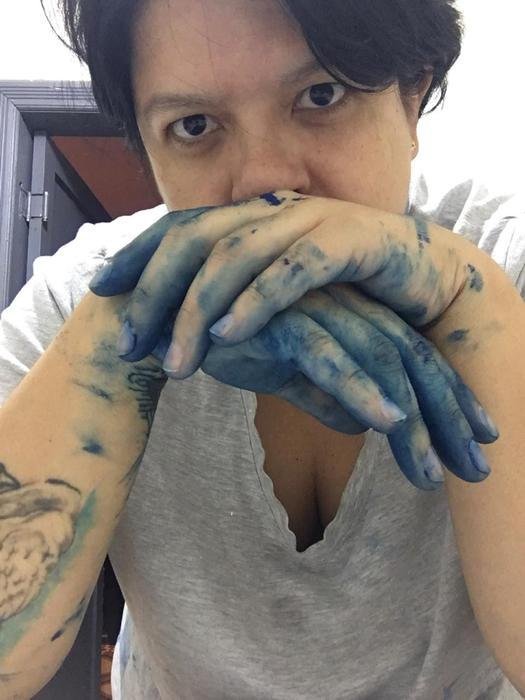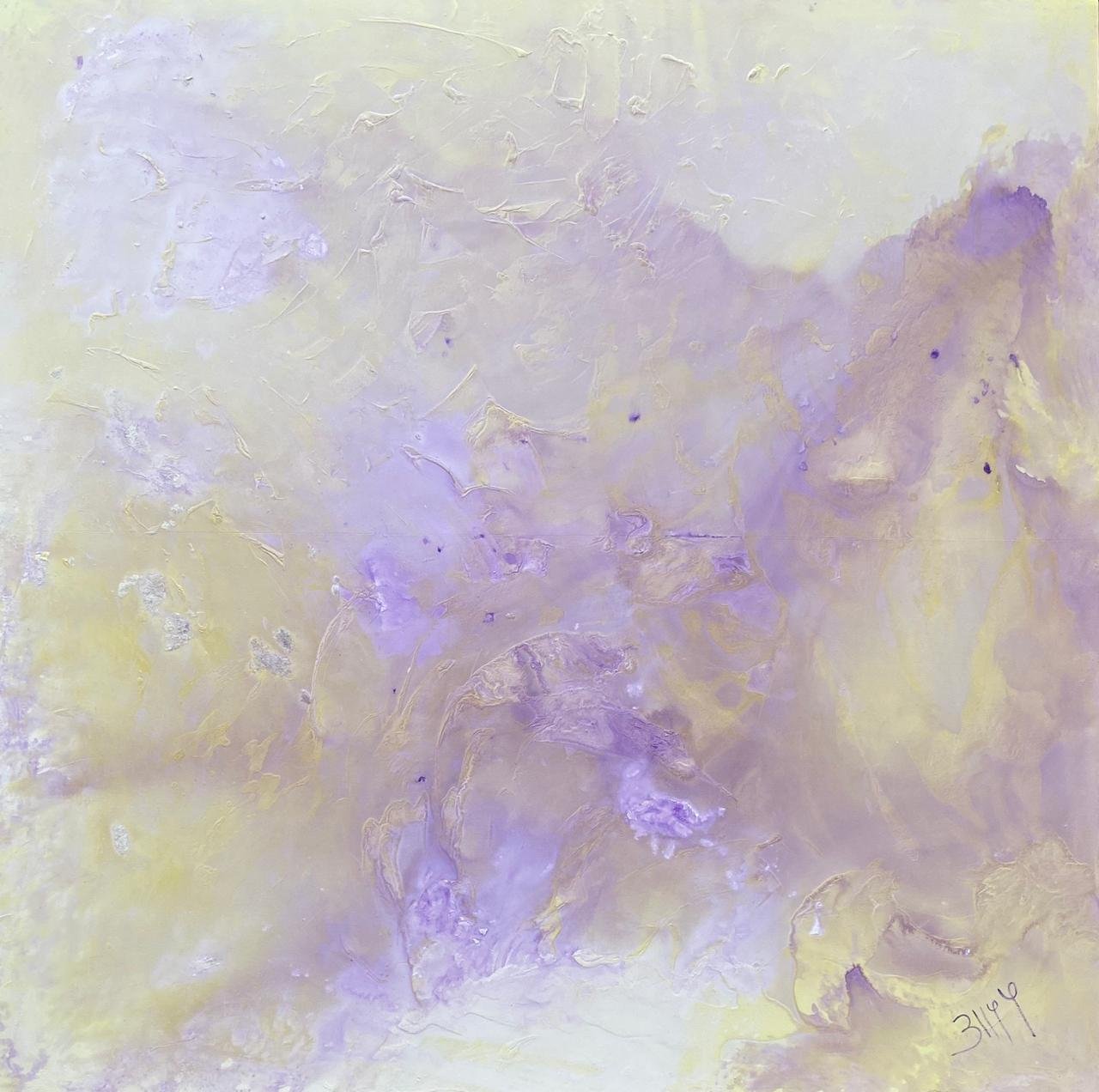Interview
Brenda Patricia Rodríguez Fernández
Brenda was born in Mexico City in 1973. She studied artistic initiation at the National Institute of Fine Arts in México, and then majored in art at the Universidad del Claustro de Sor Juana.
Brenda also studied with the artist Luis Nishizawa, from whom she learned how to handle multiple painting techniques and procedures. In 2007, Brenda undertook a Master’s Degree in social responsibility at the Universidad Anahuac.
For more than 20 years, Brenda has combined her passion for art with her social development career, working in different sectors to create innovative strategies for social inclusion within communities.
Since Brenda started holding exhibitions, she has gone by her artistic name: Brenda R. Fernández.
What is your background and how did you start your journey in the art world?
“My foray into the art world started when I was a child, raised in a liberal and strongly matriarchal Mexican family. Our foundation was based on respect, freedom, and love for others. During my early years, I was surrounded by artistic expression in the form of music, film, theater, literature and most of all, painting. My paternal grandmother used to invite me into her workshop to help her and watch her paint. This was my introduction to creativity.
In 2018, I began exploring different techniques, materials and textures, along with solid colors added into an abstract monochrome, to provoke the viewer to a broader interaction and dialogue with the artwork.
In 2020, I started working as a sculptor with one monumental masterpiece, Tu YO al Cubo, comprising of 9 poly-hedric canvases in mixed media, 460 x 240 x 240 cm. You can view more here. I also incorporated large canvases in the paintwork.
In 2021, I started experimenting with my own body, creating a life-size mold using acrylic bandages. This work led me to a literal conversation with my body’s memory in three-dimensional shapes.”
What does your work aim to say? Does it comment on any current social or political issues?
“If we are truly conscious of the present, we will be able to find the sublime in everything around us and the places we inhabit. In my artwork, there is a personal journey exploring techniques that can specify and shape personal evolution. An inner journey that takes us to light and darkness by tearing itself apart and rebuilding itself, only to self-deconstruct again.
It is a pictorial work found in the three-dimensional application of the flat surface. We cannot deny the sublimity of the subtext that the created work has, however ephemeral it may be. Abstract art has a deeply ingrained aesthetic that cannot be denied.”
Which current art world trends are you following?
“Today’s art world is experiencing an awakening by linking itself to technology. This has given way to real-time artistic production. Nevertheless, I avoid having a relationship with the artistic universe, simply because I believe each person experiences and expresses their reality from a unique approach. The center of my research is focusing on my personal conversation, and the way in which I relate both to nature and to my mind. This does not require me to look to external forms of expression but rather, to dig deeper into my being.”
“Reveal the wound, unveil the printing on the body to break the silence. Thus, the fabric is no longer a mere sign-holder representing material objects, but rather a mirror image of the multifocal projections of the mind, the subconscious and its memories.
Once the cut has been made, the skin is visibly reviled, violated, and used up, to the extent that there is nothing left to hide or to protect. The gag has fallen away and we are silent no more.
Memory becomes a hodgepodge of filleted flesh, hanging from the final pieces of tissue that dangle in the void, propped up by its fragility.”
Do you plan your work in advance, or is it improvisation?
“More than improvisation, my work is a creative form of freestyle. The first step is understanding how to handle the texture, followed by a silent conversation between the materials and my hands. It is always a process that is bred subconsciously—the idea is something that develops in my mind and then translates into an emotion that converts to color and texture.
The phenomenon that happens is difficult to explain. While I am creating a work, I am the complete me. I allow myself to be an instrument; a channel through which the magic happens. It is miraculous to see how the hues disappear as the colors take their place, adding themselves to the texture. As for the rest, nature takes its course.”
What process, materials and techniques do you use to create your artwork?
“My creative process is a collaborative one with nature. When the materials react or when they are drying, it is the elements of temperature, space, time, humidity and wind that determine how a piece will be transformed. This collaboration is a continuous process because if today is a hot day, the materials react in a certain way. If I use pigments and it is windy, there will be a gap in the canvas. Therefore, my creative process is an act of freedom and collaboration.
I use organic materials: natural pigments, different textures, marble dust, sand, flax oil, and paints that I create. Crucially, the fabric gets the main space. I believe we often forget the important role played by both the easel and the canvas. In my work, the weave of the fabric always plays a fundamental role. In treating the fabric—which is usually made of cotton—I start with a half chalk primer made of rabbit’s foot glue, calcium carbonate, flaxseed oil, zinc oxide and distilled water. This raises the absorption and refraction capacity of the textile.”
“I use different creative techniques, mainly a mixed technique based on a combination of texture, colors and painting tools such as spatulas, rollers, paintbrushes, wood and even my hands. For my sculpt work, I have experimented with fiberglass bandages, resins, plaster, polyurethane foam, silicon, among others.”
What does your art mean to you?
"Creating is my act of hope. It’s how I relate to my feelings, to my body and its memories. Through the body, we experience reality. We get to know our surroundings, we communicate who we are, and we relate to the world. Through the dynamics of recognizing others and ourselves, we generate impulses in the subconscious that are imprinted in our minds, leaving traces in our memory.”
What’s your favorite artwork and why?
“I love ‘On giving Life’, Iowa, 1975 by Ana Mendieta. In this masterpiece, the artist worked with the landscape showing a return to Mother Earth by becoming a part of nature. Her naked body lying above a skeleton in the middle of the woods is, for me, one of the most emblematic pieces of art. She turned their two bodies into a canvas, a tool for sensory exploration, creativity and communication.”
Please tell us about any previous exhibitions you found noteworthy and wish to share
“This year, 2022, I will participate in the International Fine Art Cannes Biennale in May, and also in the International Contemporary Art Biennale, Switzerland in June.
My art has been displayed at various venues in México City and throughout the country: at the Cuban Embassy in Mexico, Ateneo Español, Polyforum Cultural Siqueiros and several galleries within the city, as well as at the Cultural Centres of Chiapas, Tabasco, Baja California, Puebla, among others.
In 2019, I displayed my artwork at the Contemporary Art Fair Carrousel du Louvre Paris and at the Modern Art Museum in Vienna. These were noteworthy to me because in all my artistic life, I have always dreamed about the day that my artwork would be part of a Collective exhibition in a country other than mine, and that different people from other cultures would connect with my abstract proposal.
In 2016, I prepared ‘Destramando’, an art exhibition in which I recreated the layout of my life. Stains, freehand firm lines and scratches that mold shapes, breaks that design compasses, soft chiaroscuros denoting rhythms, and accumulated broken forms brought together as a construction.”
Website: www.brendarfdez.com.mx











